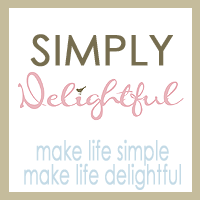She and her husband have a little boy who just started kindergarten and a newborn daughter. They wanted to create a more inviting family room that was conducive to hanging out, watching television, and doing homework. Her first priority was a rug because their daughter will be crawling and walking soon and she wanted a soft place for her to land.
Here are the "Before" pictures...


Things to keep in mind...
Normally, we would have taken into account the sofa when shopping for the rug, but the client was ready to replace hers and wanted me to consider the paint colors above anything else. She had recently had her family room, foyer and the adjacent dining room painted. She really liked the colors and didn't want to change them.
The dining room (which can be seen from the family room) is painted blue (somewhere between navy and royal blue). So this told us that our primary colors needed to be green and blue.
The client also prefers the "English Country" style...traditional, yet comfortable.
They also have this wonderful entertainment center that looks great in the room and offers a lot of much-needed storage, so it was staying. My recommendation was to remove the picture (on the right) and center the bookshelves on the wall, then spruce up the bookcases with books and pictures to tie everything together.
 Here are the "AFTER" pictures...
Here are the "AFTER" pictures... After a lot of shopping, we found an area rug that met all of our criteria. The primary colors were green and blue, the design was traditional and the price was right!
After a lot of shopping, we found an area rug that met all of our criteria. The primary colors were green and blue, the design was traditional and the price was right!Because we saved so much on the rug, we started shopping for a sofa. The client wanted it to have an attached back and deep cushions as she and her husband are both tall. We found this entire set for a steal and opted to buy the whole thing. Her husband wanted the ottoman, so we gave him his way! I like everyone to be happy.
As you can see from the picture, the sofas are brown and blue. Brown was our third accent color. The blue in the sofas pulled from the blue in the dining room nicely and also matched the matte in the picture hanging over the loveseat. We'll eventually add some throw pillows with a little bit of green in them to tie it all together, but for now, we turned to the entertainment center.
 The client had a box of books in her basement, so we used the best ones. To make bookshelves look stylish and organized, it helps to remember this tip...1/3-1/3-1/3...meaning you want 1/3 of the shelves to contain books, 1/3 to contain pictures and accessories and 1/3 to be open space.
The client had a box of books in her basement, so we used the best ones. To make bookshelves look stylish and organized, it helps to remember this tip...1/3-1/3-1/3...meaning you want 1/3 of the shelves to contain books, 1/3 to contain pictures and accessories and 1/3 to be open space.Here are some close-ups of each bookshelf. As you can see, you also want to try and use accessories that are similar in color, style and scale. It's easier than it looks, I promise. We did these bookshelves using only the homeowner's existing accessories and picture frames.


What's Next?

As you can see from this picture, the lamp in the corner is from the Arts & Crafts style and doesn't go with our new English Country look. It doesn't look bad, but it could look better, so we're currently shopping for another lamp that's more in keeping with the new style.
We're also looking for a new accent table. We'd like to find something round, but with four legs. A pedestal table would look great, but stability is going to be a big issue with a little one learning to walk soon and although pedestal tables look fabulous, they are easily turned over.
 With the big items purchased, we're now going to work on accessorizing this foyer table. Check back to see how it turns out!
With the big items purchased, we're now going to work on accessorizing this foyer table. Check back to see how it turns out!With this client, budget was of particular concern. She didn't want to spend more than $5,000. So far, we've spent approximately $3,000 and all we need to buy are accessories so I feel pretty confident that we'll be able to come in well under the client's budget and that makes the client (and me) very happy!














































